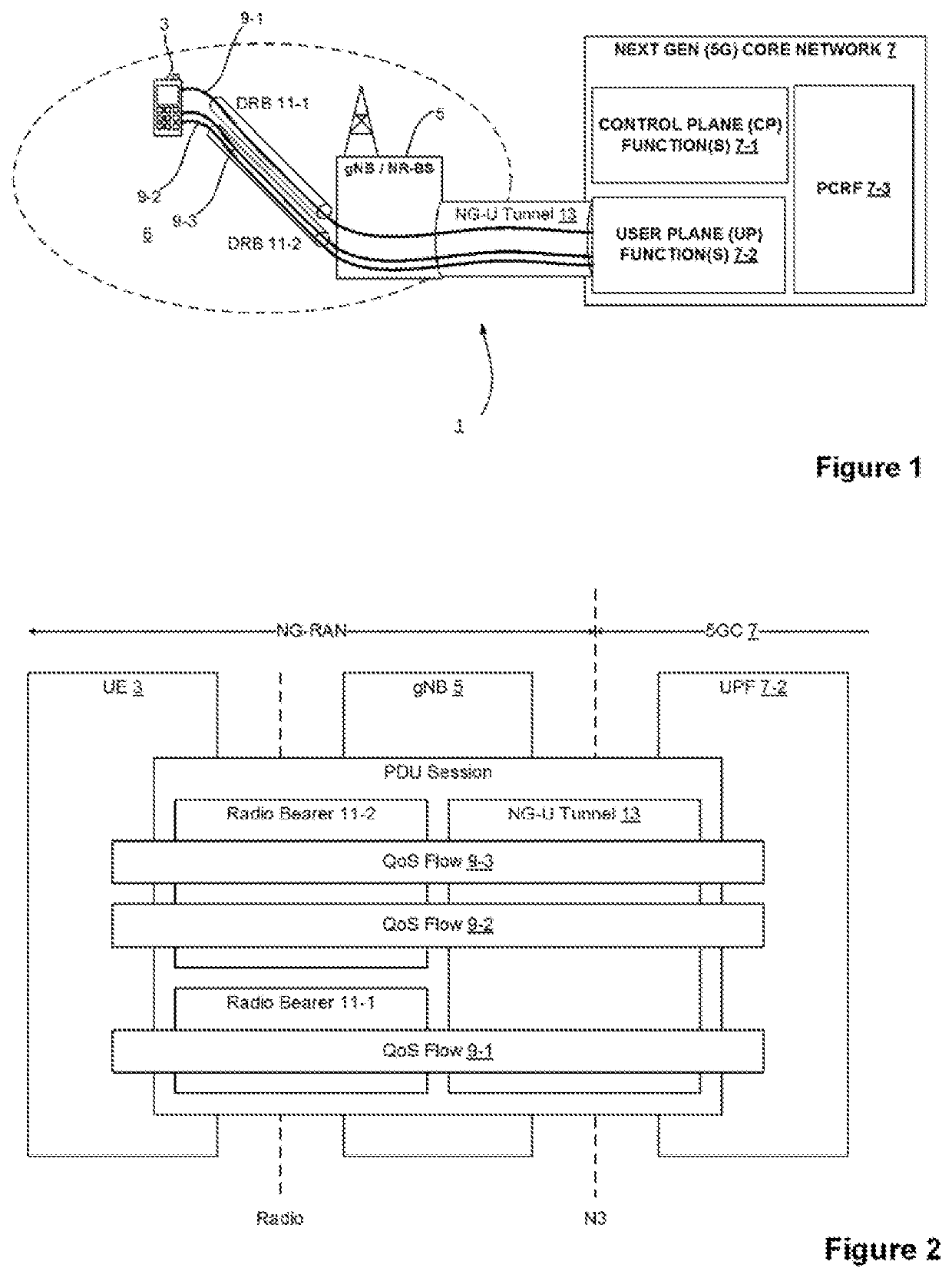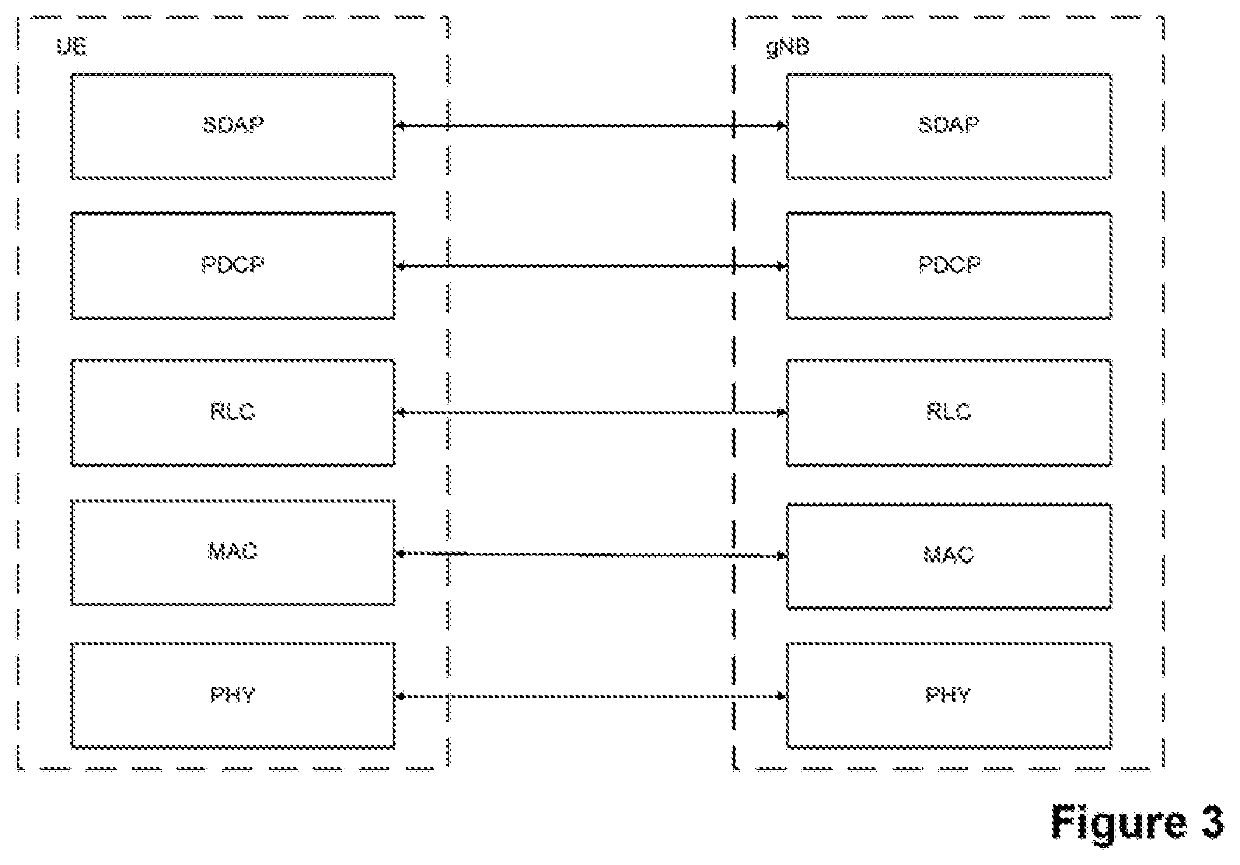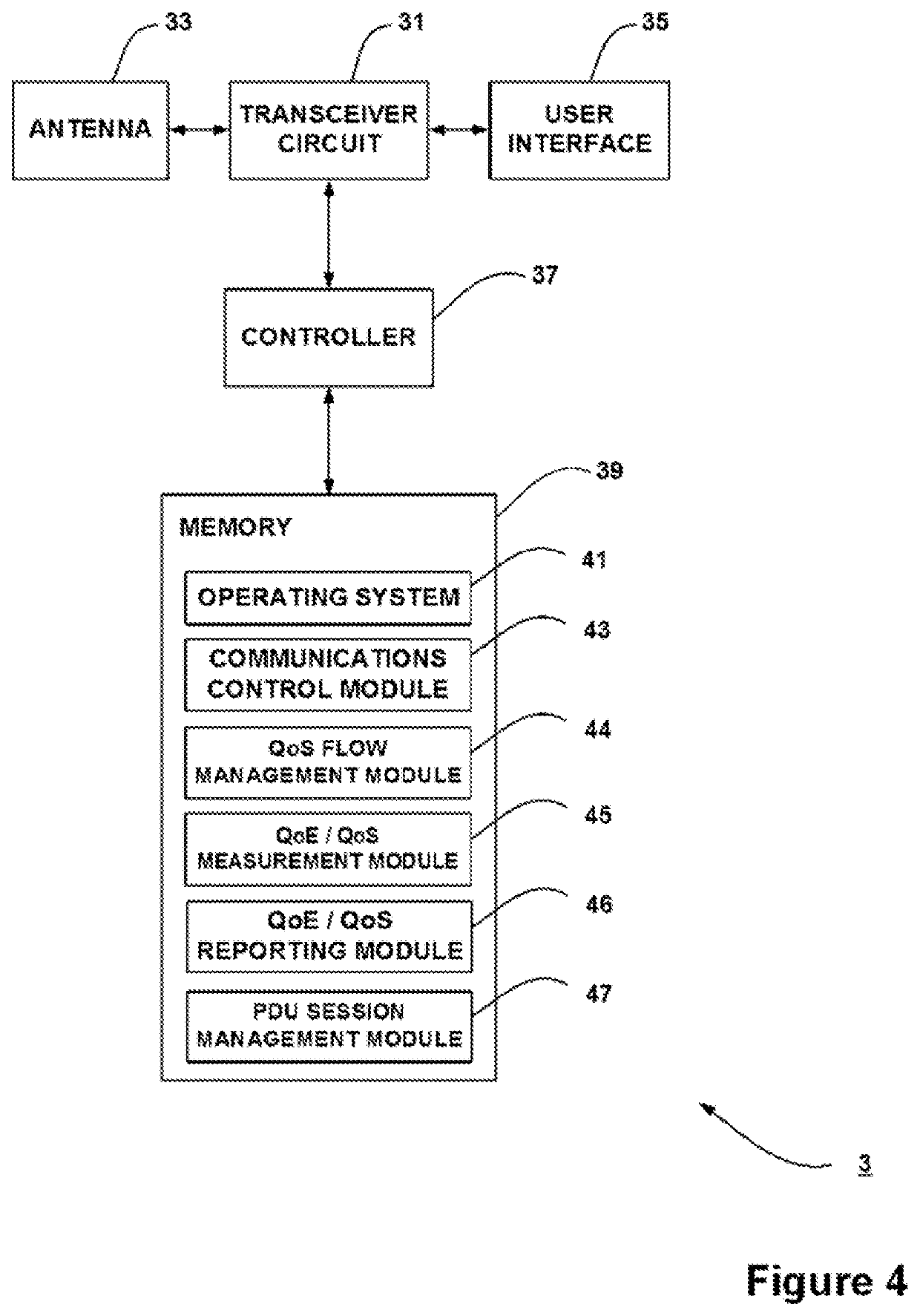Optimization of resource allocation based on received quality of experience information
a resource allocation and experience technology, applied in the field of communication system, can solve the problems of base station may not be able to meet the associated qos requirements, and inefficient and/or inappropriate one-to-one mapping in many situations
- Summary
- Abstract
- Description
- Claims
- Application Information
AI Technical Summary
Benefits of technology
Problems solved by technology
Method used
Image
Examples
Embodiment Construction
Overview
[0048]FIG. 1 schematically illustrates a cellular telecommunications network 1 in which an item of user equipment (UE) 3 (such as a mobile (cell) telephone or the like) can communicate with another UE via a base station 5 using an appropriate radio access technology (RAT). As those skilled in the art will appreciate, whilst one UE 3 and base station 5 are shown in FIG. 1 for illustration purposes, the system, when implemented, will typically include other base stations and UEs 3. The base station 5 forms part of an associated radio access network (RAN) and operates at least one cell 6 for allowing the UE 3 to access the network and receive one or more associated services.
[0049]The base station 5 is configured to operate in accordance with next generation (5G) standards and, in this example, comprises a non-distributed type gNB 5 (although in 5G it may be a distributed base station having a central unit (CU) and one or more plurality of distributed units (DU) each serving at ...
PUM
 Login to View More
Login to View More Abstract
Description
Claims
Application Information
 Login to View More
Login to View More - R&D
- Intellectual Property
- Life Sciences
- Materials
- Tech Scout
- Unparalleled Data Quality
- Higher Quality Content
- 60% Fewer Hallucinations
Browse by: Latest US Patents, China's latest patents, Technical Efficacy Thesaurus, Application Domain, Technology Topic, Popular Technical Reports.
© 2025 PatSnap. All rights reserved.Legal|Privacy policy|Modern Slavery Act Transparency Statement|Sitemap|About US| Contact US: help@patsnap.com



